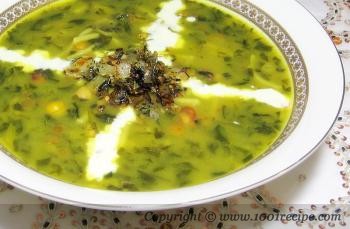دنیای زبان انگلیسی ( بهروزپور )
لغات و اصطلاح .داستان کوتاه . شعر.جوک .ضرب المثل.اشپزی.رمان. نمایشنامه.متن دوزبانهدنیای زبان انگلیسی ( بهروزپور )
لغات و اصطلاح .داستان کوتاه . شعر.جوک .ضرب المثل.اشپزی.رمان. نمایشنامه.متن دوزبانهReader-response criticism:نقد خواننده محور
Reader-response criticism is a school of literary theory that focuses on the reader (or "audience") and his or her experience of a literary work, in contrast to other schools and theories that focus attention primarily on the author or the content and form of the work.
Although literary theory has long paid some attention to the reader's role in creating the meaning and experience of a literary work, modern reader-response criticism began in the 1960s and '70s, particularly in America and Germany, in work by Norman Holland, Stanley Fish, Wolfgang Iser, Hans-Robert Jauss, Roland Barthes, and others. Important predecessors were I. A. Richards, who in 1929 analyzed a group of Cambridge undergraduates' misreadings; Louise Rosenblatt, who, in Literature as Exploration (1938), argued that it is important for the teacher to avoid imposing any "preconceived notions about the proper way to react to any work"; and C. S. Lewis in An Experiment in Criticism (1961).
Reader-response theory recognizes the reader as an active agent who imparts "real existence" to the work and completes its meaning through interpretation. Reader-response criticism argues that literature should be viewed as a performing art in which each reader creates his or her own, possibly unique, text-related performance. It stands in total opposition to the theories of formalism and the New Criticism, in which the reader's role in re-creating literary works is ignored. New Criticism had emphasized that only that which is within a text is part of the meaning of a text. No appeal to the authority or intention of the author, nor to the psychology of the reader, was allowed in the discussions of orthodox New Critics. The New Critics' position assumed an objective, fixed text that could be studied apart from any human being,[clarification needed] and this assumption persisted even into postmodern criticism.
Kind of reader-response criticism
One can sort reader-response theorists into three groups: those who focus upon the individual reader's experience ("individualists"); those who conduct psychological experiments on a defined set of readers ("experimenters"); and those who assume a fairly uniform response by all readers ("uniformists"). One can therefore draw a distinction between reader-response theorists who see the individual reader driving the whole experience and others who think of literary experience as largely text-driven and uniform (with individual variations that can be ignored). The former theorists, who think the reader controls, derive what is common in a literary experience from shared techniques for reading and interpreting which are, however, individually applied by different readers. The latter, who put the text in control, derive commonalities of response, obviously, from the literary work itself. The most fundamental difference among reader-response critics is probably, then, between those who regard individual differences among readers' responses as important and those who try to get around them.
پرسی بیش شلی:Percy Bysshe Shelley
Percy Bysshe Shelley (4 August 1792 – 8 July 1822; pronounced /ˈpɜːsi ˈbɪʃ ˈʃeli/ (UK) /ˈpɝːsi ˈbɪʃ ˈʃɛli/ (US) )[2] was one of the major English Romantic poets and is critically regarded among the finest lyric poets in the English language. Shelley was famous for his association with John Keats and Lord Byron. The novelist Mary Shelley was his second wife.
He is most famous for such classic anthology verse works as Ozymandias, Ode to the West Wind, To a Skylark, and The Masque of Anarchy, which are among the most popular and critically acclaimed poems in the English language. His major works, however, are long visionary poems which included Queen Mab, Alastor, The Revolt of Islam, Adonaïs, and the unfinished work The Triumph of Life. The Cenci (1819) and Prometheus Unbound (1820) were dramatic plays in five and four acts respectively. He wrote the Gothic novels ZastrozziSt. Irvyne (1811) and the short prose works "The Assassins" (1814), "The Coliseum" (1817) and "Una Favola" (1819). In 2008, he was credited as the co-author of the novel Frankenstein (1818) in a new edition by the Bodleian Library in Oxford and Random House in the U.S. entitled The Original Frankenstein edited by Charles E. Robinson.[3][4][5] (1810) and
Shelley's unconventional life and uncompromising idealism, combined with his strong disapproving voice, made him an authoritative and much-denigrated figure during his life and afterward. Shelley never lived to see the extent of his success and influence. Some of his works were published, but they were often suppressed upon publication. Up until his death, with approximately 50 readers as his audience, it is said he made no more than 40 pounds from his writings.
He became an idol of the next three or even four generations of poets, including the important Victorian and Pre-Raphaelite poets. He was admired by Karl Marx, Oscar Wilde, Thomas Hardy, George Bernard Shaw, Bertrand Russell, William Butler Yeats, Upton Sinclair, Isadora Duncan,[6] and Jiddu Krishnamurti ("Shelley is as sacred as the Bible.")[7]Henry David Thoreau's civil disobedience and Mohandas Karamchand Gandhi's passive resistance were influenced and inspired by Shelley's nonviolence in protest and political action.[8
Major works
- (1810) The Wandering Jew[37]
- (1810) Zastrozzi
- (1810) Original Poetry by Victor and Cazire
- (1810) Posthumous Fragments of Margaret Nicholson: Being Poems Found Amongst the Papers of That Noted Female Who Attempted the Life of the King in 1786
- (1811) St. Irvyne; or, The Rosicrucian
- (1811) The Necessity of Atheism
- (1812) The Devil's Walk: A Ballad
- (1813) Queen Mab: A Philosophical Poem
- (1814) A Refutation of Deism: in a Dialogue
- (1815) Alastor, or The Spirit of Solitude
- (1815) Wolfstein; or, The Mysterious Bandit (chapbook)
- (1816) Mont Blanc
- (1817) Hymn to Intellectual Beauty (text)
- (1817) Laon and Cythna; or, The Revolution of the Golden City: A Vision of the Nineteenth Century
- (1817) The Revolt of Islam, A Poem, in Twelve Cantos
- (1817) History of a Six Weeks' Tour through a part of France, Switzerland, Germany, and Holland (with Mary Shelley)
- (1818) Ozymandias (text)
- (1818) Plato, The Banquet (or The Symposium) translation from Greek into English[38]
- (1818) Frankenstein; or, The Modern Prometheus (Preface)[3][39]
- (1818) Rosalind and Helen: A Modern Eclogue
- (1819) The Cenci, A Tragedy, in Five Acts
- (1819) Ode to the West Wind (text)
- (1819) The Masque of Anarchy
- (1819) Men of England
- (1819) England in 1819
- (1819) The Witch of Atlas
- (1819) A Philosophical View of Reform
- (1819) Julian and Maddalo: A Conversation
- (1819) Peter Bell the Third (published in 1839)
- (1820) Prometheus Unbound, A Lyrical Drama, in Four Acts
- (1820) To a Skylark
- (1820) Oedipus Tyrannus; Or, Swellfoot The Tyrant: A Tragedy in Two Acts
- (1821) Adonaïs
- (1821) Hellas, A Lyrical Drama
- (1821) Plato, Ion, translation from Greek into English
- (1821) A Defence of Poetry (first published in 1840)
- (1821) Epipsychidion
- (1822) The Cloud
- (1822) The Triumph of Life (unfinished, published in 1824)
[Short prose works
- "The Assassins, A Fragment of a Romance" (1814)
- "The Coliseum, A Fragment" (1817)
- "The Elysian Fields: A Lucianic Fragment"
- "Una Favola (A Fable)" (1819, originally in ItalianEssays
- Poetical Essay on the Existing State of Things (1811)
- The Necessity of Atheism (1811)
- Declaration of Rights (1812)
- A Defence of Poetry
- A Vindication of Natural Diet (1813)
- On the Vegetable System of Diet (1814-1815)
- On Love (1818)
- On Life (1815)
- On a Future State (1815)
- On The Punishment of Death
- Speculations on Metaphysics
- Speculations on Morals
- On Christianity
- On the Literature, the Arts and the Manners of the Athenians
- On The Symposium, or Preface to The Banquet Of Plato
- On Friendship
- On Frankenstein
معما
- This
problem is actually damn hard, I don't know why I put it first.
 You are
given a set of scales and 12
marbles. The scales are of the old balance variety. That is, a small
dish hangs from each end of a rod that is balanced in the middle. The
device enables you to conclude either that the contents of the dishes
weigh the same or that the dish that falls lower has heavier contents
than the other.
You are
given a set of scales and 12
marbles. The scales are of the old balance variety. That is, a small
dish hangs from each end of a rod that is balanced in the middle. The
device enables you to conclude either that the contents of the dishes
weigh the same or that the dish that falls lower has heavier contents
than the other.
آموزش تصویری اصطلاحات انگلیسی
When pigs can fly

Once in a blue moon

Be in the same boat

خطای دید

The first time I saw these optical Pictures I thought they were moving but they are not, if you look at them closely they are drawn perfectly that it creates an illusion that looks like they’re moving in circles. In fact these pictures are built from an Optical Imagery graphics making our eyes and mind confuse that creates a continuous motion out of the steady object.
http://www.myce101.com/amazing-optical-illusion-that-creates-hallucination.html
زیباترینها برای شما!
| |
| زیباترین آرایش برای لبان شما راستگویی برای صدای شما دعا به درگاه خداوند برای چشمان شما ... | |
The best cosmetic for lips is truth No one can go back and make a brand new start هیچ کس نمیتونه به عقب برگرده و همه چیز را از نو شروع کنه زیباترین آرایش برای لبان شما راستگویی for voice is prayer برای صدای شما دعا به درگاه خداوند for eyes is pity برای چشمان شما رحم و شفقت for hands is charity برای دستان شما بخشش for heart is love برای قلب شما عشق and for life is friendship و برای زندگی شما دوستی هاست |
I am a native of Kashan:اهل کاشانم (سپهری)
Life is the flower multiplied to eternity
Life is the earth multiplied in our heartbeats
Life is a simple and monotonous geometry of breaths
Where I am, let it be so
The sky is mine
The window, thought, air, love, earth is mine
What signifies?
If mushrooms of nostalgia
Sometimes grow?
I don’t know
Why some say that the horse is a noble animal, the pigeon is beautiful
And why no vulture dwells in any person’s cage
I wonder why the clover is interior to alfalfa
One must wash eyes, look differently to things words must be washed
The word must be wind itself, the word must be the rain itself
One must shut umbrellas
One must walk in the rain
One must carry the thought, the recollection in the rain
One must go walk in the rain with all the townsfolk
One must see friends in the rain
One must search love in the rain
Aash Reshteh :اش رشته
Main Ingredients:
Dried Leek: 8 tbsp
Parsley: 1 bunch
Spinach: 1 bunch
Chick Peas: 1/2 can cooked (270 ml)
Romano Beans: 1/2 can cooked (270 ml)
Lentils: 1 can cooked (540 ml)
Reshteh: 2 cups (Soup noodles from Iranian stores)
Butter: 2 tbsp
Dried Mint: 2 tsp
Onion: 1 medium
Garlic: 2 cloves
Turmeric: 1 tbsp Ground
Kashk: optional (thick whey from Iranian stores)
Pepper: 1/2 tsp
Directions:
1. Cook chopped vegetables in boiling water with turmeric and pepper for 30 min on medium-high heat.
2. Add peas, beans, lentils and broken reshteh into the vegetable mixture and cook for another 15 min.
3. Slice onion and garlic into tiny pieces and saute in a skillet until golden then add dried mints and saute for 2-3 min.
4. Add butter and salt the soup.
5. Serve it with onion and mint mixture and some kashk on top of it.
